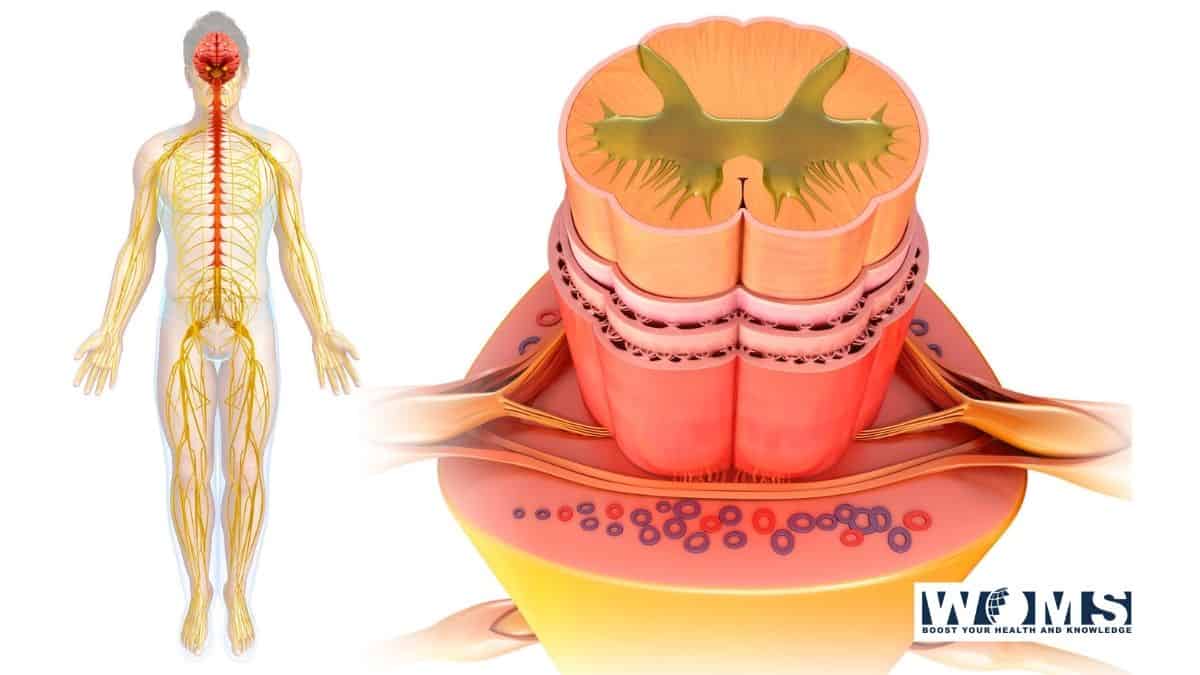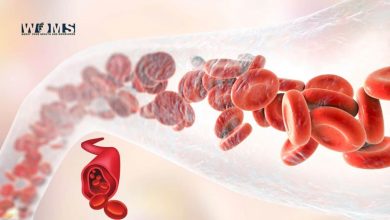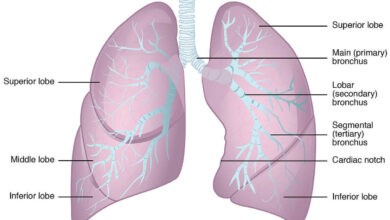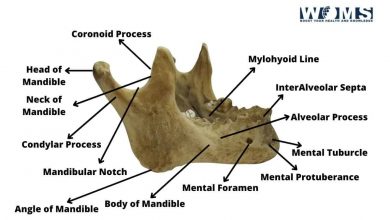Anatomy of the spinal cord

Introduction
The anatomy of the spinal cord begins with the introduction of the spinal cord. The spinal cord is the long cylindrical lower part of the central nervous system. It occupies the upper two-thirds of the vertebral canal and is enclosed in the three meninges. It gives rise to 31 pairs of spinal nerves and retains the basic structural pattern.
Dissection
Study the anatomy of the spinal cord after it was removed from the vertebral canal and separated from the dura mater and arachnoid mater. Identify the dorsal root to the presence of dorsal root ganglion or spinal ganglion. Note the position of cervical enlargement in the upper part and lumbosacral enlargement in the lower part.
See the numerous nerve roots surrounding the filum Terminale forming the cauda equina. Cut transverse sections of the spinal cord at cervical, thoracic, lumbar, and sacral regions to note the shape and size of the horns in relation to white matter.
Features
The anatomy of the spinal cord featured its length of it. The spinal cord anatomy is 18 inches or 45 cm in an adult male. and 42 cm in an adult female. It is surrounded by the three meninges. It extends from the upper border of the atlas vertebra to the lower border of the first lumbar vertebra in an adult.
In children, it extends up to the L3 vertebra. Superiorly, It is continuous with the medulla oblongata, .inferiorly it terminates as conus medullaris. As the spinal cord is much diminished than the panorama of the vertebral column, the spinal segments do not lie opposite the corresponding vertebrae.
In reckoning the position of a spinal segment in affiliation to the surface of the body, it is important to remember that a vertebral spine is always lower than the corresponding spinal segment. The level of the spinal segment with their vertebral level is shown in.
Meningeal coverings
The spinal cord is surrounded by three meninges. The outermost is the dura mater, the middle one is the arachnoid mater and the innermost is the pia mater. The space among the dura mater and arachnoid mater is called subdural space.
The arachnoid and pia maters are separated by subarachnoid space which contains cerebrospinal fluid. The spinal cord anatomy extends in the lower part of the 1st lumbar vertebra as conus medullaris.
Vertebral levels of Spinal segments
Cl-C7 C1-C8
T1-T6 T1-T8
T7-T9
T10-T11 T10-T12
L1-L5
T12-L1 S1-S5 and Co1
CONUS Medullari’s only pia mater is continued us a thin fibrous cord, the filum Terminale.
The spinal cord is enclosed only by the meningeal layer of the dura mater. The space between the meningeal layer and endosteum of the vertebral canal is called epidural space, where epidural anesthesia can be given.
The spinal pia mater undergoes modification as follows:
a. Ligamentum Denticulatum with 21 pairs of teeth-like projections that keep the spinal cord in position.
b. Linea Splendens is a thickening seen at the anteromedian sulcus.
The filum Terminale is 20cm long and after leaving through sacral hiatus ends by getting attached to the periosteum of the dorsal surface of the first segment of the coccyx.
The dura along with arachnoid accompanying with subarachnoid space comprising CSF add up to 2nd sacral vertebra. Between the lower border of L1 and S2 vertebrae, the subarachnoid space contains spinal nerve roots which constitute the cauda equine.
It is due to this feature that lumbar puncture is done below L2 vertebra without any danger to the human spine.
Enlargements
Limbs form the appendages of the trunk. Their muscles have to be supplied by neurons of the spinal cord. Neurons at appropriate levels form enlargements to be able to supply increased musculature. The spinal cord presents cervical enlargement for the supply of upper limb muscle. This extends from C4 to T1 spinal segments with a maximum diameter at the level of the C6 segment.
Another enlargement is the lumbar enlargement for the supply of muscles of the lower limb. It extends from the level of S1.
Cauda equina
Dorsal and ventral nerve roots of right and left sides of L2 to L5, S1 to S5, and Co1 nerve lies almost vertically around filum Terminale. These are called cauda equine as they resemble a horse’s tail. Dorsal and ventral nerve roots of one segment join together at respective intervertebral foramen to exit as the spinal nerve.
There are 40 nerve roots at the beginning of the cauda equine. These are dorsal and ventral nerve roots of the right and left sides for each segment. So each segment has 4 nerve roots. Thus there are 4×4=16 lumbar nerve roots; 4×5=20 sacral nerve roots and 4×1=4 coccygeal nerve roots, making it to 40 nerve roots.
One dorsal root and one ventral root joints form one spinal nerve and leave through the foramen on one side. So at every intervertebral foramen 4nerve roots exit the cauda equina; leaving it thinner. In the end, the only filum Terminale remains to be attached to the coccyx.
Filum Terminale
Filum Terminale is a modification of pia mater that proceeds downwards from the apical part of conus medullaris. Filum Terminale is often used while studying spinal cord anatomy. The Filum Terminale is about 20 cm long strand composed of fibrous tissue.
The main function of this part is to give support and longitudinal strength to the spinal cord. The upper portion of Filum Terminale is called as Filum Terminale Internum. It is about 15 cm in length. It extends up to the second sacral vertebrae at the lower level. The lower portion also called the Filum Terminale Externum extends right from the apical part of the tubular sheath to the first segment of the coccyx.
Conus medullaris
For those studying the spinal cord, Conus medullaris is an important term. The conus medullaris is actually the lower end of the spinal cord that is usually tapered. Regarding its location, it is located in the level of lumbar vertebrae from level 1 to level 2. Until now, there is no well-defined idea about the upper portion of the conus medullaris. However, the spinal cord segment from first to fifth is at its correspondence.
The famous term related to Conus medullaris is a pathological disorder famous as Conus Medullaris syndrome. Whenever the Conus medullaris part of the spinal cord is subjected to injuries, some signs and symptoms appear. These collections of signs and symptoms are termed Conus Medullaris Syndrome. Some common signs of this syndrome include back pain, bladder dysfunction, bilateral sensory loss, etc.
External features of the spinal cord
Anteriorly, the anatomy of the spinal cord reveals a deep anterior median fissure lodging the anterior spinal artery. The posterior median sulcus is a thin longitudinal groove from which a septum runs in the depth of the spinal cord.
Each half is subdivided into anterior, lateral, and posterior regions by anterolateral and posterolateral sulci. Ventral or motor nerve roots emerge from the anterolateral sulcus. Dorsal or sensory nerve roots enter the spinal cord from the posterolateral sulcus.
Internal structures
White matter, nerve fibers lie outside and grey matter lies inside. In the center of grey matter is the central canal containing CSF. The grey matter is in the form of “H” with a grey commissure joining of right and left sides.
Grey matter comprises one posterior horn and one anterior horn on each side in the entire extent of the cord. Only in T1-L2 and S2-S4 segments, there is an additional lateral horn for the supply of the viscera. This is part of the autonomic nervous system. The shape and size of the horns differ in different segments due to functional reasons.
Spinal nerves
Spinal nerves arise in pairs, 8cervical, 12thoracic, 5lumbar, 5sacral, and 1 coccygeal.
Each spinal nerve arises by a series of dorsal and ventral nerve rootlets that unite in or near the intervertebral foramen to form the spinal nerve.

Dorsal Root Ganglion
As the dorsal rootlets converge, there is swelling, of the dorsal or posterior root ganglion, which houses the cell bodies of all the sensory neurons in that particular nerve.
Branches of a Typical Nerve
Dorsal Ramus
It supplies the dorsal one-third of the body wall. Dorsal rami do not supply the limbs (Fig. 23.8).
Ventral Ramus
It supplies the ventral two-thirds of the body wall including the limbs.
SPINAL SEGMENT
Segment or part of the spinal cord to which a pair of dorsal nerve roots, (right and left) and a pair of ventral nerve roots is attached is called a spinal segment. Since the length of the spinal cord (45cm) is smaller than the length of the vertebral column (65 cm)t the spinal segments do not correspond to the vertebral levels. spinal segments being shorter lie above the corresponding vertebrae.
Nuclei of spinal cord
The grey matter of the spinal cord is arranged in three horns. Anterior is the motor, lateral being visceral-efferent and afferent in function, and posterior is sensory in function. The nuclei of the spinal cord are also one of the important parts of the anatomy of the spinal cord.
Nuclei in Anterior Grey Column or Horn
The anterior horn is divided into a central part, the head, and a dorsal part, the base. The nuclei in the anterior horn innervate the skeletal muscles. The most prominent neurons are alpha neurons. Their axons leave the spinal cord through ventral nerve roots to innervate skeletal muscles. Smaller neurons are gamma neurons. These supply intrafusal fibers of muscle spindles. The cells in the anterior horn are arranged in the following three main groups.
1. Medial group: It is present throughout the entire extent of the spinal cord and innervates the axial muscles of the body
2. Lateral group: Present only in the cervical and lumbar enlargements and supplies musculature of limbs. It is subdivided into three subgroups.
a. Anterolateral supplying proximal muscles of limbs (shoulder and arm/ gluteal region and thigh)
b. Posterolateral supplying intermediate muscles of limbs (forearm/leg).
c. Post-posterolateral innervating the distal segment (hand/ foot).
3. Central group: Only in upper cervical segments as phrenic nerve nucleus and nucleus of the spinal root of the accessory nerve.
Nuclei in Lateral Horn
Nuclei in the lateral horn are as follows:
1. Inermediolateml nucleus: This acts as both efferent and afferent nuclear columns. This nucleus is seen at two levels.
a. From T1 to L2 segments, giving rise to pre-ganglionic sympathetic fibers (thoracolumbar outflow).
b. From S2 to S4 segments, giving rise to pre-ganglionic parasympathetic fibers chiefly for the pelvic viscera.
At these two levels, the intermediolateral cell column receives visceral afferent fibers.
2. Intermediomedial nucleus: This is the most an internuncial neuronal column.
Nuclei in Posterior Grey Column
The nuclei of the spinal cord are one of the important parts to discussed in the title of the anatomy of the spinal cord. Afferent Nuclear Group Column. The four main afferent nuclei are seen in this are:
1. Posteromarginal nucleus: Thin layer of neurons caps the posterior horn. It receives some of the incoming dorsal root fibers.
2. Substantia gelatinosa: This is found at the tip of the posterior horn through the entire extent of the spinal cord. It acts as a relay station for pain and temperature fibres and is concerned with the sensory associative mechanism. Its axons give rise to the lateral spinothalamic tract.
3. Nucleus proprius: It lies subjacent to the substantial gelatinosa throughout the entire extent of the cord. It is concerned with the sensory associative mechanism.
4. Nucleus dorsaIis also known as a thoracic nucleus at the medial part of the base of posterior horn extending from C8 to L3 segments. It is a relay nuclear column for reflex or unconscious proprioceptive impulses to the cerebellum and its axons give rise to the posterior spinocerebellar tract.
The laminar organization in the spinal cord
In thick sections, spinal cord neurons appear to have a laminar (layered) arrangement. Ten layers of neurons are recognized, known also as laminae of Rexed. These are numbered consecutively by Roman numerals, starting at the tip of the dorsal horn and moving ventrally into the ventral horn.
- Lamina I: Corresponds to posted marginal nucleus.
- Lamina II: Corresponds to Substantia gelatinosa.
- Lamina Ill and IV: Correspond to nucleus Proprius.
- Lamina V and VI: Correspond to the base of dorsal column.
- Lamina VII: Occupies the territory between dorsal and ventral horns. This lamina contains many cells that function as interneurons. Three clear cell columns are recognized within this lamina. These are intermediolateral, intermediomedial and nucleus dorsalis (nucleus thoracic or Clarke’s column). Nucleus dorsalis is present on the medial aspect of dorsal horn from C8 to L3 segments. The sacral autonomic nucleus is an inconspicuous column of cells in the lateral part of lamina VII in segments S2, S3, and S4.
- Lamina VIII: Corresponds to ventral horn in thoracic segments but at the level of limb enlargements of the spinal cord, it lies on the medial aspect of the ventral horn.
- Lamina IX: Includes the lateral group of nuclei of the ventral horn. The axons of these neurons leave the spinal cord to supply the striated or skeletal muscles of limbs.
- Lamina X: Surrounds the central canal. It is composed of decussating axons, neuroglia, and some neurons in the grey matter surrounding the central canal that have properties of interneurons.
Sensory receptors
The peripheral endings of afferent fibers which receive impulses are known as receptors.
Functional classification
1. Extewceptors: These respond to stimuli from the external environment, that is pain, temperature, touch, and pressure.
2. Pmprioceptors: These respond to stimuli in deeper tissues that is a contraction of muscles, movements, position, and pressure related to joints. These are responsible for the coordination of muscles, maintenance of body posture, and equilibrium. These actions are perceived both at an unconscious level and at a conscious level
3. Interoceptors /Enteroceptors: These include receptor end-organs in the walls of the viscera, gland, blood vessels, and specialized structures in the carotid sinus, carotid bodies, and osmoreceptors. Also carry sensations of hunger, nausea, and pain.
4. Special sense receptors: These are concerned with vision, hearing, smell, balance, and taste.
Also Read about: Anatomy of the heart
Summary
Let’s end the discussion of the anatomy of the spinal cord with a short summary. Sensations enter the spinal cord via dorsal roots and ascend in the dorsal column as a medial lemniscal system and in the anterolateral column as spinothalamic pathways.
Both sensory systems decussate, but at different levels. Cerebellum gets information about the trunk and legs through dorsal and ventral spinocerebellar tracts and from the arm and neck via cuneocerebellar trunks.
Sensations from the face and mouth get carried via the trigeminal nerve.
Motor fibers start from motor areas of the brain, and pass through the corona radiate, posterior limb of the internal capsule, and brainstem. In the lowest part of the medulla oblongata, most of the fibers cross to go to opposite side anterior horn cells.
Fibers arising from the motor cortex till they reach anterior horn cells are called upper motor neuron fibers. Anterior horn cells and fibers arising from the cells till they reach the muscle are called lower motor neuron fibers. you can also learn detail about spinal cord anatomy in Fitzgeralds’ clinical neuroanatomy and neuroscience.




